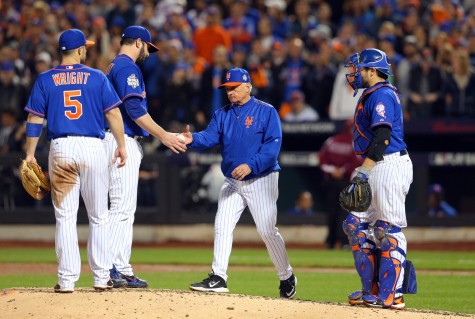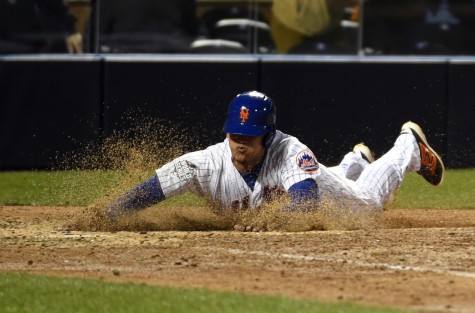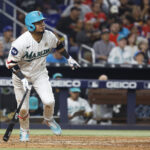
I know the last thing those of us bursting with excitement and anticipation for 2016 want to be reminded of is game five of the World Series, but stick with me here. I’ve been thinking about the 9th inning of that game an awful lot, but not because of the despair we all shared at the Mets blowing a golden opportunity to send Jacob deGrom to the mound for game six and the possibilities that flowed from it.
No, I’ve been thinking about it because of a profound lesson that pertains to baseball, which as we know so frequently parallels life itself. And it’s a lesson that generates a filter through which we can prudently analyze the moves a manager makes on the field and a general manager makes off of it.
A team thrives when its players are set up to succeed, instead of being set up to fail.
Matt Harvey had dominated game five for eight innings. He had fulfilled, in fact had exceeded, his promise to come up big when it counted most. Eight shutout innings on the biggest stage of all for a desperate team. It was understandable that he wanted the ninth inning. But Harv had already succeeded, He had already completed his job, and the manager had as good a closer as any manager could want ready to do his job. No matter what another pitcher did in the ninth, the ace had truly become the ace that November night.
And a clean ninth inning would have set Familia up to succeed, and re-establish the dominance that had gotten away from him in game one, and game four (though that might have turned out very differently if Murph had fielded that little league grounder instead of pulling a Buckner).
Instead, both pitchers were set up to fail. Harvey by being sent out one more time when he had already put an exclamation point on his performance, Familia by being asked to rescue a one run game with an inherited runner in scoring position and no outs, instead of getting a clean ninth inning with a two run lead.
Sure, you might say, it would have been cool for Harv to pitch a shutout, and for the closer to be ready in case he could not close the deal. But that was not how either of them had been employed all season and through the post-season. Yes, the post-season is different because a closer often has to be extended beyond three outs or function in unfamiliar territory, like entering with runners on base. But only if it is necessary. And it simply wasn’t necessary that night.
Look, no one has been more adamant than yours truly in decrying the inexplicable throw by Lucas Duda that should have resulted in an easy tag at the plate and a return trip to KC, but that doesn’t change the fact that two of our best pitchers were set up to fail instead of succeed. We have all witnessed multiple instances when a manager makes the wrong move but gets away with it, and vice-versa.
But if you look at our magical 60 game run from August to October, the acquisitions – and call-up – made by Sandy Alderson had much to do with their success not just because of the performance of those added players themselves, but because it allowed the manager to finally place most all of his roster in positions to succeed rather than fail, as I wrote in the early days of Cespedes.
David was no longer expected to be the straw that stirred the drink. Duda was no longer expected to be the sole power source. Conforto was not expected to be a savior, nor to hit lefties as a rookie. Flores and Tejada shared shortstop admirably in an arrangement far superior to either of them holding down the position every day. Lagares only had to hit against lefties. Pressure on Familia was reduced with the addition of a couple of one-time closers.
So, how does all this relate to the 2016 defending National League champions (boy, that sounds nice)? Well, Cespedes or no Cespedes (almost certainly the latter), it makes me, for one, optimistic. Because most of the 2016 Mets are set up to succeed rather than fail.
What we don’t have in thump with the loss of Cespedes we may well have made up with length and flexibility in the lineup. As of now, Lagares/De Aza or perhaps Cabrera would project to bat 8th. Lagares offers speed, some power and rakes against lefties, his potential platoon partner is coming off an .800 OPS season vs. righties, and Cabrera is a professional hitter with a .740 career OPS. Lineup length means we don’t have to rely on a single superstar like young Bryce to carry the team, nor suffer during his slumps or absence.
With virtually every player in the starting lineup a threat to hit 15 HR’s, four of five likely to exceed 20, and half a dozen serious threats to drive in 70+ runs, we have balanced power and RBI potential. All from a lineup with far lower expectations than most because of our out-of-this-world starting rotation and a bullpen that is already good and young, and could become really good with the addition of Antonio Bastardo or an equivalent.

Lagares is set up to succeed because he can either prove he deserves to start every day, or have an acceptable safety net in De Aza. Wilmer is now set up to succeed as a super utility man, a role he thrived in once he was relieved of the burden of being the everyday SS. I would even expect Tejada to succeed as a backup IF. David knows Flores or even Neil Walker or Cabrera can spell him effectively at 3B. If we can get TDA to learn 1B adequately (a la Buster Posey), we set him up for less wear and tear, more at bats and take the pressure off Duda against certain lefties, and more opportunities for Plawecki to prove himself as perhaps the best backup catcher in the majors.
And while it is impossible to quantify, the value of 14 games of post-season experience – and the confidence gained from succeeding enough to win the pennant, not to mention doing all this when no one thought it was possible – can not be understated, particularly for a team defined by its youngest players.
On top of all this, they have managed to avoid the kind of long term contracts that could become major burdens when it comes time to actually pay for a rotation making pennies on the dollars they are worth, and will eventually have to get paid.
Compare all this to our chief rival, the Nationals. After two playoff collapses in what was supposed to be their time, they set up Drew Storen, for one, to fail by sending the message he wasn’t good enough to continue doing what he had done very well for four months last season. And replaced him with a clubhouse cancer, Jonathan Papelbon, sure to make a bad and leaderless clubhouse further deteriorate. They demoted a 15 game winner to the bullpen to make way for a supposed superstar, Max Scherzer, and set Tanner Roark up to fail while reducing their payroll flexibility for years to come. They expected Scherzer, a career #2 starter, to become a true #1, which he failed to do. And they even sent Papelbon back out to the mound after he had choked their superstar. I don’t know which is more incredible – that Papelbon did that, or that their clueless manager didn’t even see it happen, and wasn’t told.
The Nats added have lefty bats to their lineup with Daniel Murphy and Ben Revere, but with Storen now gone, Papelbon kept on the roster by a reluctant front office and heading up an entirely revamped bullpen, their starting SS and two of the members of their much-ballyhooed 2015 rotation gone and another reduced to a swing role, a second choice manager in the dugout and memories of an utterly disastrous 2015 still fresh, it’s not nearly as clear that the Mets’ chief divisional rivals are set up to succeed.
It’s somewhat the same with their biggest league rivals. The Cubs, already boasting a young, strong and deep lineup, but badly outpitched by the Mets in the NLCS, spent major bucks adding to an already strong lineup instead of pitching. Hard to fathom, though they may yet trade the now expendable Jorge Soler or Javier Baez for more pitching in the two and a half months before opening day.
And the Giants rolled the dice on three risky investments in Denard Span, Johnny Cueto and Jeff Samardzija…some or all of whom could thrive or flop. Who really knows?
Could the Mets use another big bat? Sure. Would it be nice to have an Aroldis Chapman (his ability, not his personality) or even a Darren O’Day added to the pen? Of course. Could injuries derail this team? That’s always possible, as is some regression by our stud rotation and closer. Conforto might not hit lefties, Duda might go through extended slumps again, David’s stenosis might prove far more damaging than it was last season. As we well know, anything can happen. And the Wilpons are still, well, the Wilpons.
But these Mets appear to be set up to succeed, so let’s salivate at the prospects and embrace the season ahead without reservation, lest we all resort to the gloom and doom endemic to so many Mets fans and set ourselves up to fail at savoring a special time in the history of our beloved franchise.















